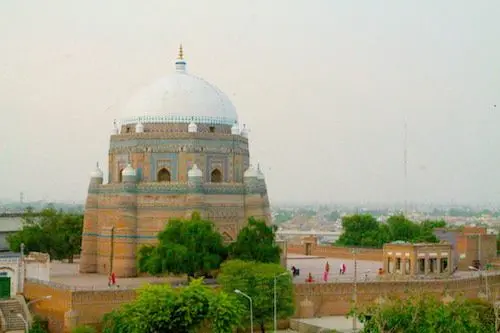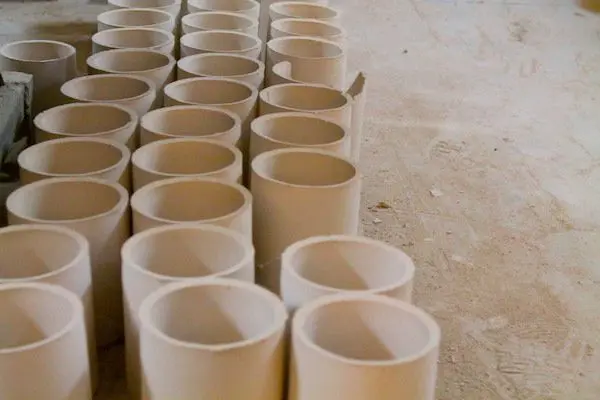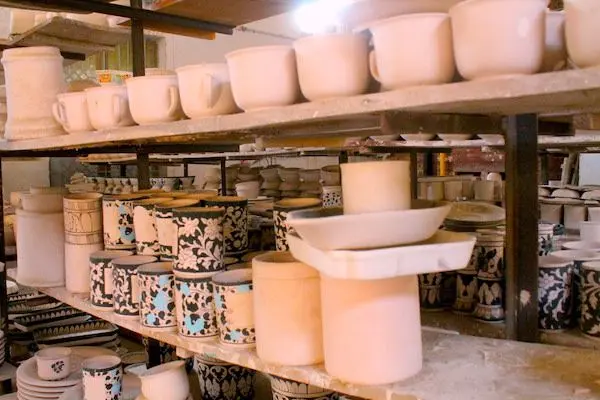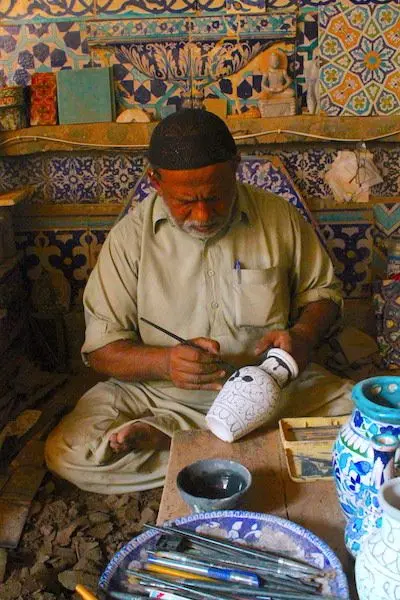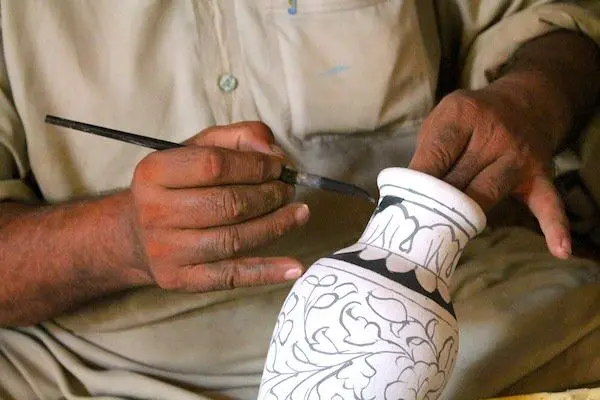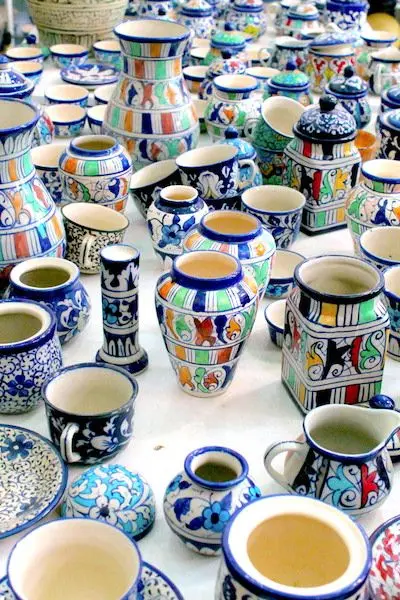In Punjab area of Pakistan, specially Multan – one of the Indian subcontinent’s oldest cities, famous blue or “Kashi” pottery craftsmanship is still alive. This craft was originally influenced by the Central Asian art and may have originated from the city of Kashgar, in western China. But over a period of centuries, Kashi work in Multan developed its own unique, indigenous style. The mausoleum of Shah Rukn-e-Alam and the shrines of Shah Ali Akbar and Shah Yousuf Gardezi that are located in Multan, all incorporate tiles exhibiting classic Kashi work, conspicuous in blue pottery.
Multan, a city of Pakistan
How is Blue Pottery Made?
Usually unique blue rather indigo color is used to make patterns on the clay pots. Sometime a combination of different colors such as green and cobalt blue is used on white base color.
How is blue pottery made?
In blue painting, the clay is the basic element, which is taken specially from the rivers. After grinding and staining this clay, it is moistened in water for three days. After this it is softened by crushing with hands. Then this clay is extended to the surface of smooth ground and with iron tools cut art least into more then one inch tiles or pieces, because this clay shrinks on dehydration. On drying, the tiles or pots are cut into required sizes. Then they are carved with various tools and small holes or gaps on these tiles or pots are also filled with clay to make their surfaces smooth and plane.
Blue pottery without blue-painting
Before blue-painting on the plane surface of tiles the mixture of 50% and 15% gum is coated. On drying, it appears white. The outline of the design is drawn with a pen or brush by using 75% cobalt and 25% water mixture. Border is designed in the same way.
The outline of the design is drawn with a pen or brush by using 75% cobalt and 25% water mixture
Other colors could also be used to make design more attractive. These amazing designs items has to go through a very complex and long process to reach their final state; process involves kneading, filtration, grinding, molding and finally baking this raw material between 400 to 1200 degrees of heat in baking chambers. It is a delicate and laborious procedure requiring a lot of craftsmanship and dedication.
'Kashi' is known for intriguing decorations, which include animal motifs, floral patterns, and calligraphy
Any single piece will stay true in color and condition even if exposed to natural elements for well over 100 years. Kashi is known for intriguing decorations, which include animal motifs, floral patterns, and calligraphy. However, currently the craft, which has been an integral part of Multan’s rich heritage, is in decline due to the lack of patrons. Many workshops, which hitherto specialised in the creation of blue pottery, have abandoned production of handcrafted earthenware and instead use mechanisation and artificial paints to create their utensils.
"Handmade blue pottery needs attention from our people as they do not realize the hard work which goes into producing it"
Yet some maestros of the craft, like (artisan name) , continue to preserve and promote blue pottery due to its historical and cultural significance for the City of Saints. Inside his workshop, one encounters a riot of oceanic hues, floral designs and moulds. A plethora of clay pots, vases, lamps, cup and utensils furbished with wax are strewn inside the place. The painstaking stages of producing the beautiful pottery — starting from the arduous process of moulding the clay to baking it and then painting it – is accomplished by professional artisans, student trainees and family members.
The veteran artisan expressed his passion for preserving the traditional handicraft of pottery but lamented that. “Handmade blue pottery needs attention from our people as they do not realize the hard work which goes into producing it.
And unfortunately, it really seems that the craft of blue pottery, just like the dying craft of handmade sterling silverware in Lahore, may soon fade into oblivion unless its rescued by patrons who buy these unique crafts. At Vceela, we have an extensive blue pottery collection which you can buy online, directly from the artisans who create it.
We are also training blue pottery artisans on new design patterns and digital literacy. So explore our blue pottery collection and select a beautiful piece painstakingly made for you by Multani Kashigari artisans.
